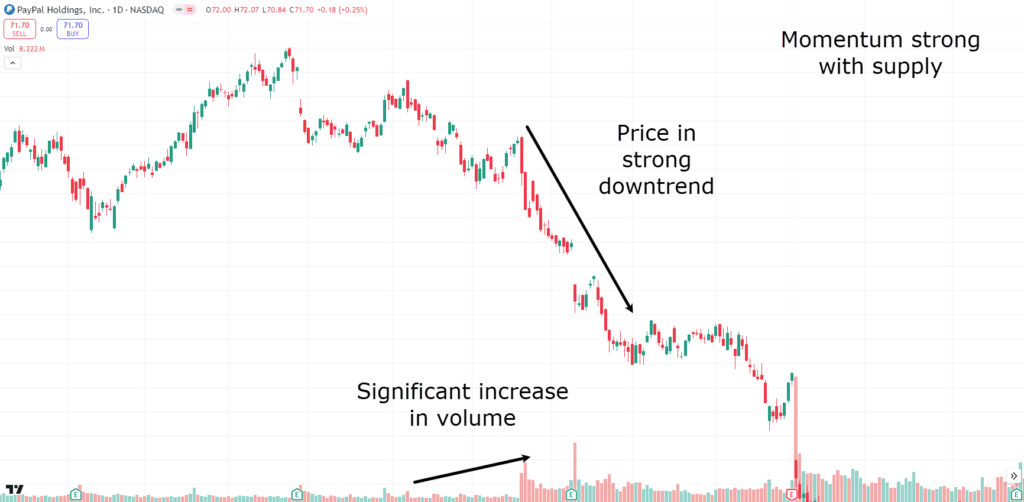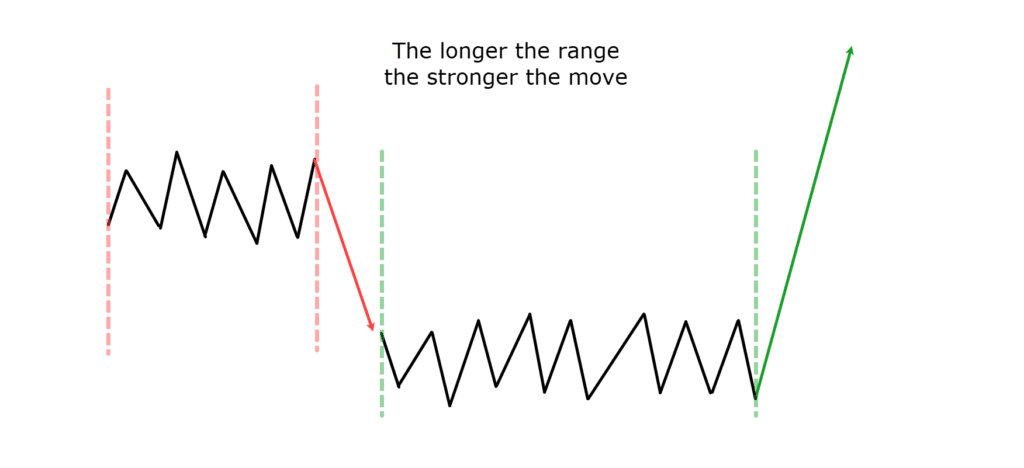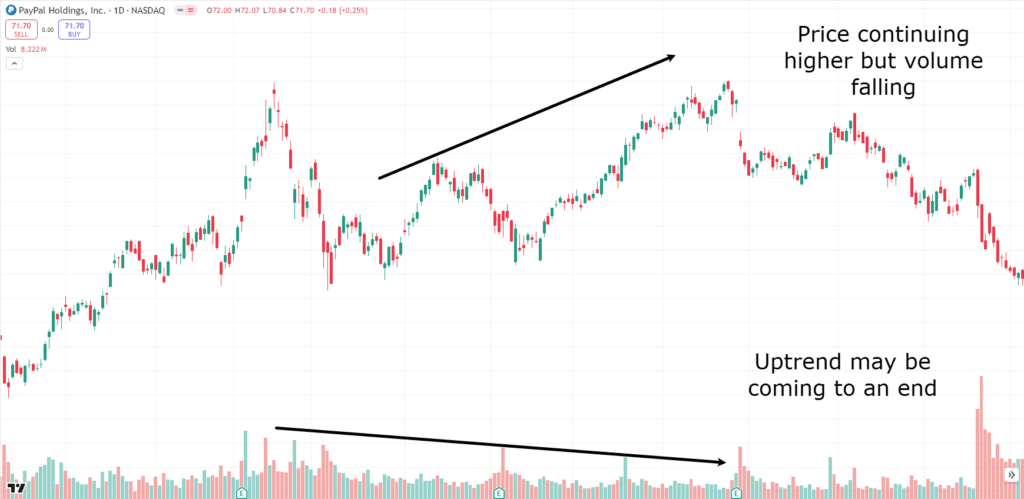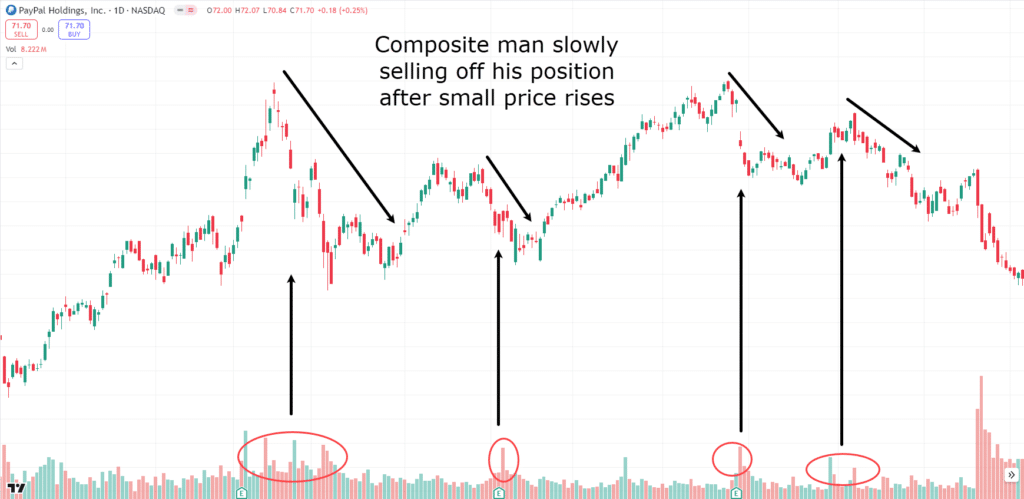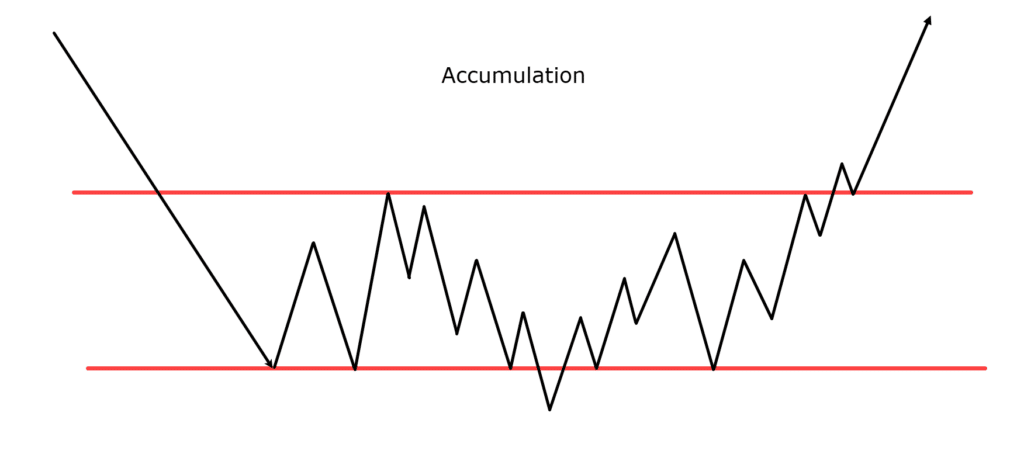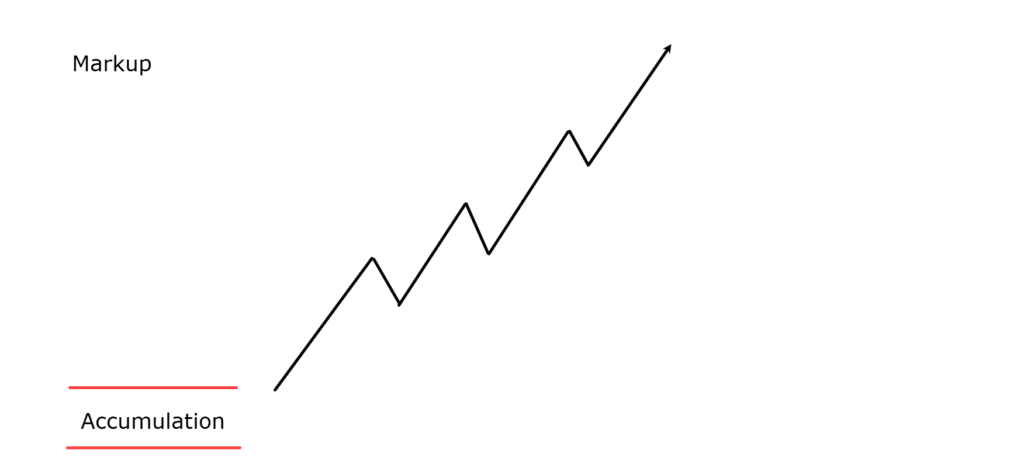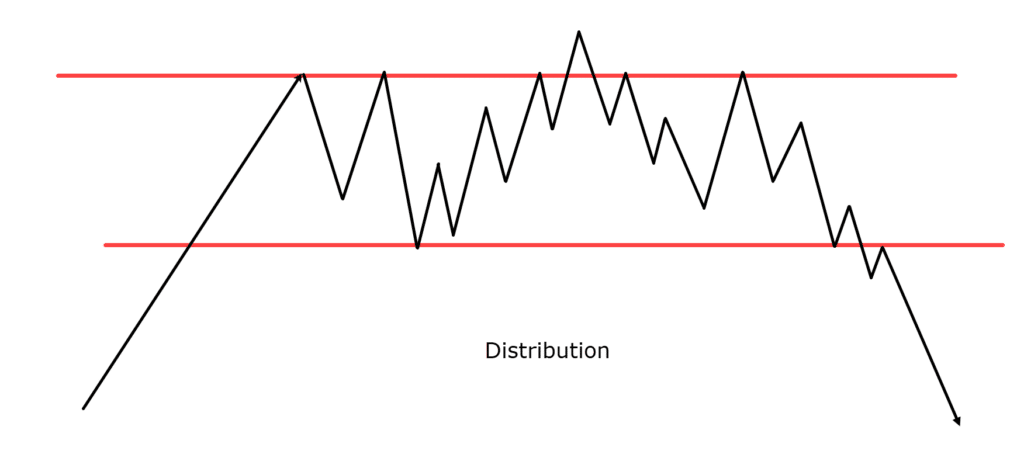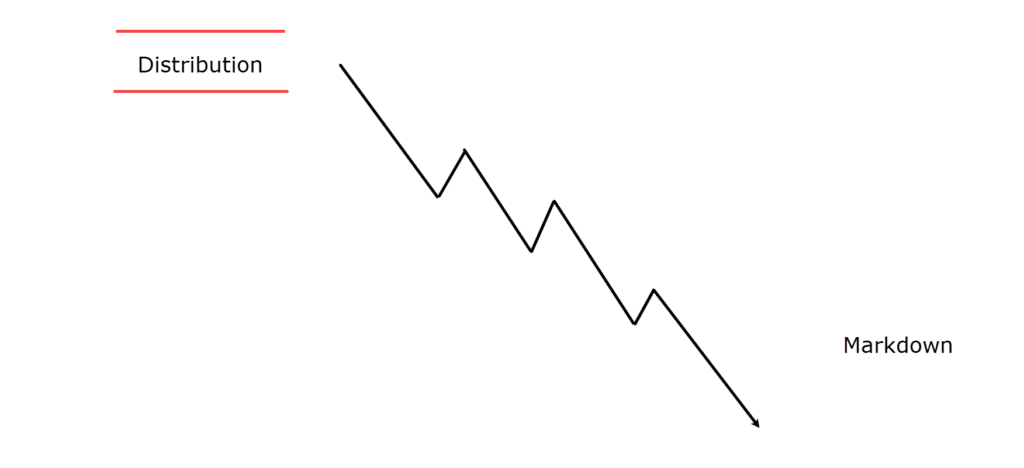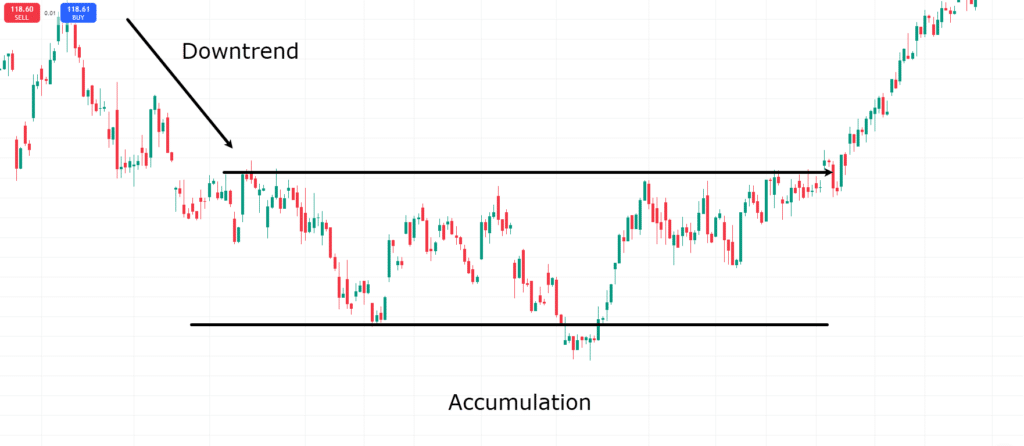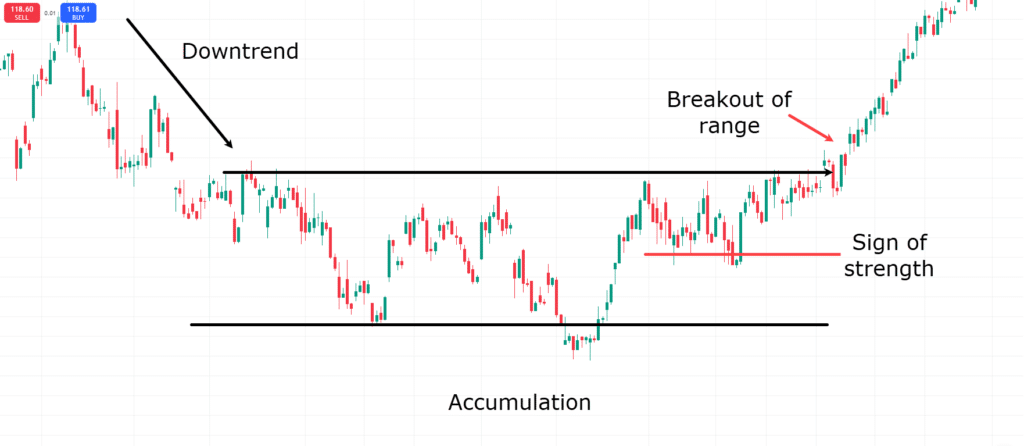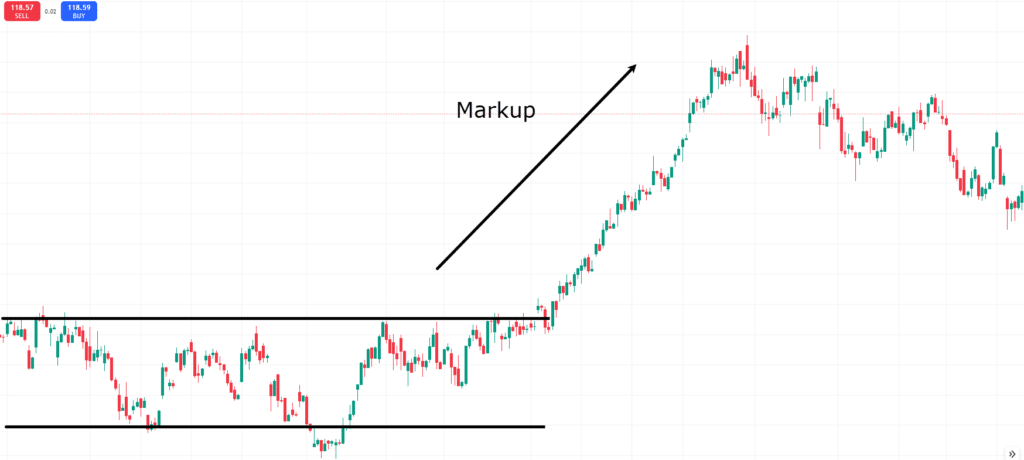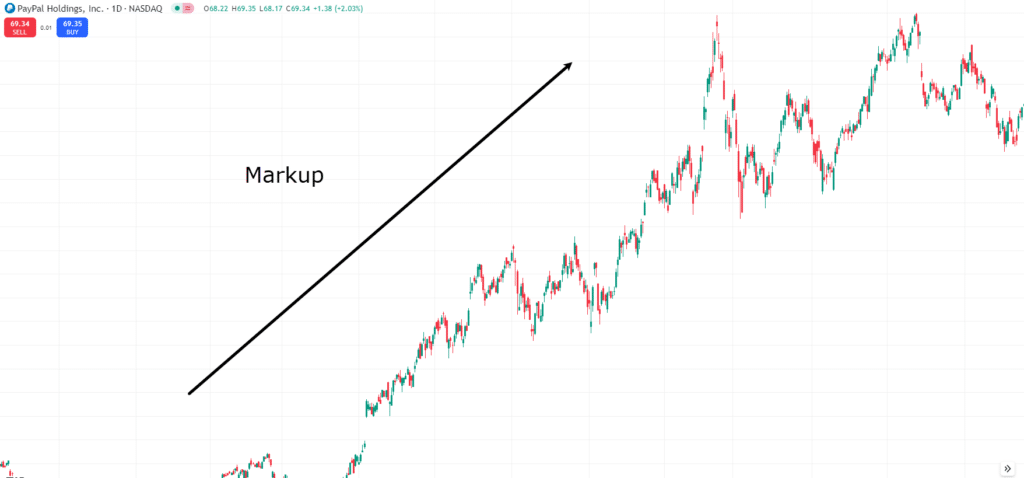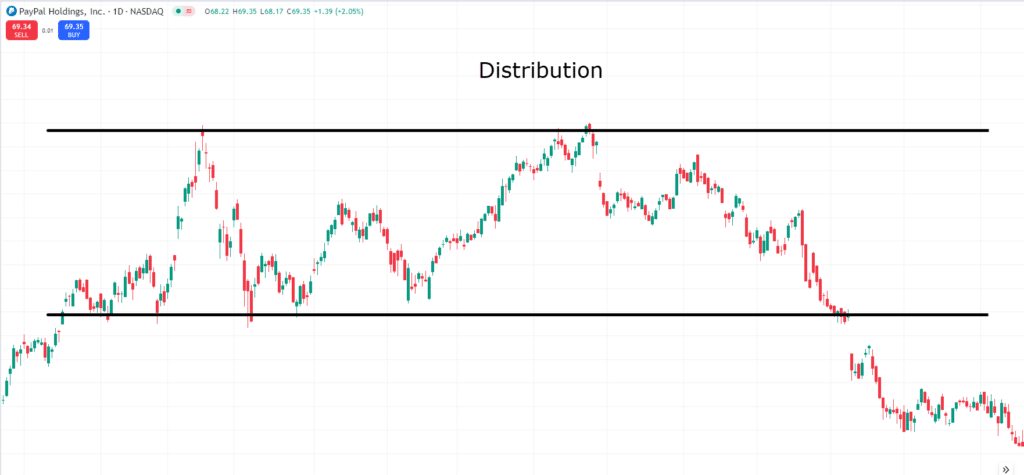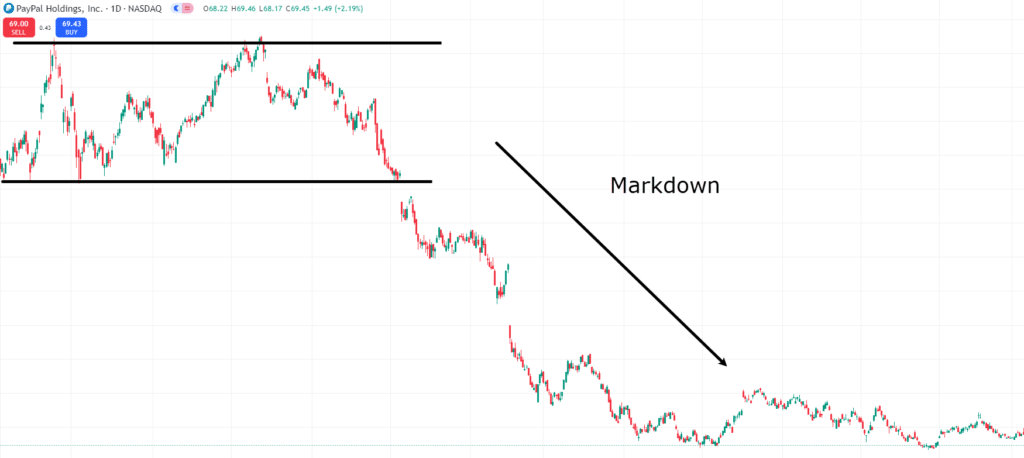How do some merchants appear to all the time discover themselves on the best aspect of the market?
Can they actually anticipate main worth strikes earlier than they occur?
Though it might appear like they’re utilizing a secret components, don’t fear… it’s not rocket science!
Merchants with quite a lot of expertise typically use tried-and-true strategies to assist them perceive how the market works and make higher selections.
One such methodology is the Wyckoff concept, which this information is all about!
At first look, Wyckoff’s concepts may appear exhausting to grasp and even old-fashioned.
But when you know the way to make use of Wyckoff’s concepts accurately, they may give you an enormous edge in your buying and selling technique.
By specializing in these key features, you’ll see how highly effective these strategies might be to your buying and selling:
- What’s Wyckoff?
- The Three Legal guidelines of Wyckoff
- Wyckoff’s Composite Man
- The Market Phases: Accumulation, Mark Up, Distribution, Markdown
- The Limitations of Wyckoff in Trendy Markets
Able to take your market data to the following stage?
Then let’s get began!
What’s The Wyckoff Concept?
The Wyckoff Methodology is a buying and selling technique created by Richard D. Wyckoff within the early 1900s.
By taking a look at worth modifications, buying and selling quantity, and general market traits, it tries to assist merchants determine how the market works.
His method was groundbreaking as a result of it gave merchants a transparent approach to analyze markets, by specializing in how provide and demand have an effect on costs.
Wyckoff believed that markets transfer in predictable cycles and that by learning these cycles, merchants might try to predict the place costs may go subsequent.
The Wyckoff Methodology was first made for buying and selling shares, however it may be utilized in different markets as properly.
Wyckoff’s methodology is constructed on three principal concepts:
- The Legislation of Provide and Demand: Costs go up when extra folks wish to purchase than promote and go down when extra folks wish to promote than purchase.
- The Legislation of Trigger and Impact: An enormous buildup of shopping for or promoting (the trigger) results in a major transfer in worth (the impact).
- The Legislation of Effort versus End result: By evaluating how a lot buying and selling exercise (effort) there may be to how a lot the worth strikes (consequence), merchants can get a way of how sturdy or weak a market transfer may be.
Altogether, this methodology provides you a approach to learn market indicators and use them to make extra knowledgeable choices about when to purchase or promote!
The Three Legal guidelines of The Wyckoff Concept
Wyckoff Concept Legislation #1: Provide and Demand
Most significantly, Wyckoff’s buying and selling concept relies on the Legislation of Provide and Demand.
It’s fairly easy: costs go up when extra folks wish to purchase than promote (demand is larger than provide), and costs go down when extra folks wish to promote than purchase (provide is larger than demand).
This concept is straight out of primary economics and helps clarify why costs in monetary markets transfer the best way they do.
However how do merchants use this virtually with Wyckoff?…
…properly, merely have a look at worth and quantity information to see if provide or demand is in management!
For instance, if the worth is rising and lots of shares are being traded (excessive quantity), it exhibits sturdy demand, that means the worth may maintain going up.
On the flip aspect, if the worth is dropping with excessive quantity, it exhibits sturdy provide, and costs may proceed to fall…
PayPal Every day Chart Sturdy Downtrend With Improve Quantity:
That is particularly necessary in the course of the accumulation (shopping for) and distribution (promoting) phases…
Throughout accumulation, good merchants are quietly shopping for, slowly rising demand with out pushing costs up an excessive amount of.
Because the accessible provide will get smaller, costs begin to rise, resulting in an uptrend!
In the course of the distribution section, these merchants begin promoting, rising provide and resulting in falling costs.
Understanding this move will help you determine when the market may change route and tips on how to plan your trades.
Now, the following regulation is the regulation of trigger and impact.
Wyckoff Concept Legislation #2: Trigger and Impact
One other necessary thought in Wyckoff’s buying and selling methodology is the Legislation of Trigger and Impact.
It states that each vital worth transfer occurs for a purpose.
To place it merely, the quantity of shopping for or promoting that occurred earlier than a worth change (the impact) determines how huge that change is.
It’s one more regulation serving to you higher estimate how far costs may rise or fall after a interval of shopping for (accumulation) or promoting (distribution).
For instance, throughout accumulation, the “trigger” is the good merchants slowly and quietly shopping for shares.
The longer and extra intense this shopping for section, the bigger the worth bounce (the “impact”) will likely be in the course of the begin of the brand new uptrend!.
Instance Trigger and Impact:
By taking this into consideration, merchants can set reasonable worth targets and have extra persistence, understanding that giant worth actions typically take time to materialize.
Recognizing the “trigger” out there permits merchants to place themselves for the “impact,” serving to them benefit from vital worth shifts.
Wyckoff Concept Legislation #3: Effort Vs End result
Yet another necessary thought within the Wyckoff Methodology is the Legislation of Effort versus End result.
It says that the quantity of effort (measured by buying and selling quantity) ought to match the consequence (worth motion).
A sign of a powerful pattern is when effort and consequence match up.
But when they don’t match, it might imply the pattern is weakening or might reverse.
To confirm a powerful uptrend, for instance, you’d search for each rising costs and buying and selling quantity.
But when costs maintain rising whereas quantity drops… properly, you may be taking a look at a weaker pattern that would quickly reverse...
PayPal Every day Chart Development Weakening:
For downward traits, if costs are falling and quantity is excessive, it signifies stronger promoting stress and a continued decline.
Nevertheless, if costs are falling however quantity is reducing, it might imply promoting stress is easing, and a reversal may be coming.
This primary regulation will help you notice potential modifications just by taking a look at how carefully quantity and worth motion match up.
It’s additionally one other instance of how analyzing quantity typically provides clues about upcoming worth modifications.
Now, you may be asking, who’s behind these huge strikes?
Effectively, let’s see what Wyckoffs concept has to say…
Wyckoff Concept’s Composite Man
Wyckoff’s concept is most attention-grabbing in terms of the thought of the “Composite Man.”
He imagined the market is influenced by a fictional character known as the “Composite Man.”
This character represents the actions of the largest and strongest market movers—typically known as “good cash” or “huge cash.”
These are the big institutional traders, hedge funds, and different main gamers with the cash and affect to have an effect on markets.
Wyckoff believed that the Composite Man’s purpose is to purchase (accumulate) plenty of shares when costs are low and promote (distribute) them when costs are excessive.
However the catch is that the Composite Man does this in a means that hides his true intentions.
Throughout accumulation, he quietly buys with out pushing costs up an excessive amount of.
Throughout distribution, he sells right into a rising market, typically utilizing information and market sentiment to his benefit to ensure he will get the very best worth…
Composite Man Concept:
For merchants utilizing the Wyckoff Methodology, understanding what the Composite Man is doing is important.
It helps them spot the totally different phases of the market, like when huge gamers are shopping for up shares (accumulation), once they’re promoting them off (distribution), and the ensuing strikes up (markup) or down (markdown) in worth.
Your purpose is to align your trades with the actions of the Composite Man.
Purchase when he’s shopping for…
Promote when he’s promoting…
…so that you might be on the best aspect of the market!
Fairly attention-grabbing concept, proper?
Now, let’s look yet one more time on the phases of the strategy…
The 4 Phases of The Wyckoff Concept Defined
Accumulation
Accumulation Diagram:
As you possibly can see within the diagram above, the accumulation section is when the market stops falling and begins to stage out.
After costs have been dropping for some time, they start to maneuver sideways inside a good vary.
Throughout this era, there’s no clear route out there—costs go up and down barely as patrons and sellers are evenly matched.
So, why does this occur?
This section happens as a result of huge, savvy traders—typically known as “good cash”—begin shopping for the asset at these low costs, believing it to be an excellent deal.
They purchase slowly and quietly to keep away from inflicting a sudden worth improve that may tip off different traders about their actions.
The buildup section indicators that the downward pattern may be coming to an finish, and the market may very well be on the point of climb once more.
As soon as there’s sufficient shopping for stress to outweigh the promoting, costs will begin to rise.
Recognizing this accumulation stage is essential as a result of it means that you can enter the market earlier than it transitions into the following stage, often called the markup section, the place costs start to extend considerably.
Markup Section
Markup Section Diagram:
The markup section is when costs begin to rise steadily, breaking out of the sideways sample seen throughout accumulation.
The market strikes into an uptrend, with costs forming larger highs and better lows.
That is often probably the most worthwhile time for merchants who purchased in in the course of the accumulation stage.
The markup section happens as a result of the large traders (“good cash”) have already purchased up quite a lot of the accessible provide, lowering what’s left for others.
As extra traders discover the upward momentum, they begin shopping for too, which pushes costs even larger.
Constructive information or sturdy financial information typically provides gas to this section, drawing in much more patrons.
The markup section signifies a powerful uptrend and is often accompanied by rising demand and rising confidence amongst traders.
At this level, extra folks—together with on a regular basis retail merchants—begin to be a part of the pattern.
Are you able to see the significance of shopping for in the course of the accumulation section?
If you happen to miss out, you may find yourself getting into the market later in the course of the markup section, when costs are already larger.
Now, how are you aware when it’s time to promote?
That’s the place the distribution section is available in…
Distribution Section
Distribution Section Diagram:
The distribution section is when the market’s uptrend begins to lose steam, and costs begin shifting sideways once more.
In contrast to the buildup section, which occurs after a downtrend, distribution happens after a major uptrend.
Throughout this time, costs fluctuate inside a spread, and the sturdy upward momentum begins to fade.
Why does this occur?
Within the distribution section, the “good cash” that purchased in in the course of the accumulation section begins to dump their positions to lock in earnings.
They offload their holdings to the broader market, typically promoting to retail traders who entered the market late, drawn by the earlier uptrend.
Distribution indicators that the uptrend is weakening, and a reversal may be on the best way.
As extra promoting stress builds, the market struggles to maneuver larger, setting the stage for the following section: the markdown section…
Markdown Section
Markdown Section Diagram:
The markdown section is when costs begin to fall constantly, signaling the start of a brand new downtrend.
The market shifts to decrease highs and decrease lows as promoting stress turns into stronger than shopping for curiosity.
This section can generally set off panic promoting, inflicting costs to drop even sooner.
Markdown happens as a result of the market acknowledges that the earlier uptrend is over.
Those that purchased in the course of the late levels of the uptrend start promoting their positions to chop losses or defend earnings.
As costs proceed to fall, extra traders panic and promote, which drives costs down additional.
This markdown section signifies a bearish market, the place the pattern is clearly downward.
Buyers who didn’t catch the indicators of the shift in the course of the distribution section may face vital losses, whereas those that bought earlier keep away from many of the decline.
So, are you able to see how understanding Wyckoff’s market phases will help you determine the place you’re out there cycle?
It’s a invaluable software for gauging the place the market may be headed subsequent and making extra knowledgeable buying and selling choices.
Let’s check out some actual chart examples so you possibly can see how they give the impression of being in precise markets…
Wyckoff Concept: Buying and selling Examples
Earlier than we discuss markup and markdown, allow us to have a look at some inventory examples of how accumulation and distribution play out.
Additionally, it’s necessary to do not forget that the buildup and distribution diagrams are subjective.
It requires follow and expertise to have the ability to choose them up in actual time, so don’t beat your self up if issues don’t go completely to start with.
With that mentioned, try the distinction in how worth is shifting at these key areas on the chart…
XOM 4-Hour Chart Accumulation:
Are you able to see how the worth was in a gentle downtrend, constantly making decrease lows and decrease highs?
However then one thing modifications within the worth motion.
As an alternative of constant this sample, the worth makes a decrease low however then begins to kind even highs and even lows, signaling a possible shift in market conduct.
As the worth continues to maneuver, it experiences a spring—a second the place it drops under the vary’s low however then shortly rebounds all the best way to the vary’s excessive.
This speedy restoration signifies that patrons are stepping in, and will imply that the market is gearing up for a markup section…
XOM 4-Hour Chart Accumulation Breakout:
At this level, worth holds near the vary excessive and varieties a brand new minor help stage, also called a Signal Of Energy…
XOM 4-Hour Chart Markup:
After this level, the vary lastly breaks out to the upside, signaling the start of the markup stage.
Acquired it?
Subsequent, check out a distribution instance…
Paypal Every day Chart Markup:
As you possibly can see in PayPal’s each day chart, the worth was initially in a gentle uptrend, constantly making larger highs and better lows…
Paypal Every day Chart Distribution:
Nevertheless, on the high of this pattern, the worth begins to kind a spread, repeatedly struggling to interrupt previous the earlier highs.
That is the primary signal {that a} potential reversal may be coming.
When the worth breaks under the vary low and fails to carry it as help, it turns into clear that this was the distribution section of the market cycle.
Check out what occurs subsequent…
Paypal Every day Chart Markdown:
You’ll be able to see the worth continues to pattern decrease within the markdown section.
So, discover how necessary it’s to concentrate as to whether markets are struggling?
It’s these equal highs in distribution and equal lows in accumulation that may tip you off as to what could occur subsequent!
Rigorously following worth motion via these phases may give clues about future strikes.
After all, it might not all the time be apparent, as market phases can range in form or measurement…
However by asking your self, “What section of the market am I in?” you possibly can achieve perception into whether or not you’re shopping for on the proper worth.
For instance, let’s say you discover the worth is in markup and begins to vary…
Effectively, doesn’t it recommend that the market may very well be in a distribution vary? That the uptrend could have run its course?
Whereas many retail merchants could wish to bounce in, you need to use Wyckoff to rise above, and perceive that the worth is extra prone to enter the markdown stage quickly.
Getting the thought?
Nice!
With that mentioned, let’s discover some limitations of Wyckoff…
Limitations
Wyckoff Quantity evaluation might be deceptive
These days, quantity information will not be as straightforward to grasp because it was once, which may make utilizing the Wyckoff Methodology tougher.
When Richard Wyckoff developed his method within the early twentieth century, quantity was a dependable indicator of market exercise.
Nevertheless, trendy buying and selling has modified lots since then!
As we speak, with the rise of algorithmic buying and selling, high-frequency buying and selling (HFT), and darkish swimming pools (non-public exchanges the place huge trades occur), quantity can generally give deceptive indicators.
Algorithmic buying and selling can generate big numbers of trades that don’t really replicate actual shopping for or promoting curiosity however are simply computer systems exploiting small worth modifications.
Equally, darkish swimming pools can cover giant trades from the general public, making it tougher to see the true quantity exercise…
Due to these modifications, Wyckoff’s conventional method to quantity could not all the time work in addition to it as soon as did.
In actual fact, merchants at this time may want to regulate their methods or use further instruments to take care of these trendy market situations.
Finest for Positional Buying and selling, Not Day Buying and selling
The Wyckoff Methodology is commonly seen as much less efficient for day buying and selling due to how a lot markets have modified.
As we speak, giant establishments, market makers, and even teams of retail merchants could cause fast, unpredictable worth swings, making it tougher to depend on Wyckoff’s rules for intraday buying and selling.
For instance, stop-hunting is widespread in day buying and selling, the place huge gamers push costs to hit the stop-loss orders of smaller merchants, inflicting short-term volatility.
This makes it troublesome to exactly place your orders and cease losses with out them being probably worn out.
That’s why Wyckoff tends to work higher for positional buying and selling, the place you maintain a commerce for days, weeks, and even months.
In these longer time frames, the market noise from day-to-day actions settles down, making it simpler to see the larger image and apply Wyckoff’s methods.
When you can nonetheless use Wyckoff for day buying and selling, you simply must be very conscious of which section of the market cycle you’re in and commerce accordingly.
While you achieve extra data and follow, you’ll start to see the place appropriate stop-loss positions needs to be and the way you need to use Wyckoff to your benefit on the decrease timeframes.
Suited to shares greater than foreign exchange
With regards to shares, the Wyckoff Methodology works greatest as a result of the cycles of accumulation, distribution, and quantity evaluation are simpler to see.
Shares typically observe extra predictable patterns, with huge establishments quietly shopping for shares (accumulation), then driving up costs (markup), and finally promoting to the general public (distribution).
This performs out properly with Wyckoff’s phases and makes it simpler for merchants to acknowledge the availability and demand.
Nevertheless, the foreign exchange market is a unique beast.
As foreign exchange operates 24/7, worth actions are pushed by a variety of things like financial information, politics, and central financial institution actions.
These components could cause sharp and unpredictable strikes, making it tougher to suit foreign exchange worth conduct into Wyckoff’s phases.
Moreover, as a result of foreign exchange doesn’t have a central trade, quantity information is much less dependable in comparison with the inventory market.
Foreign exchange additionally tends to vary greater than pattern, particularly on larger timeframes, which doesn’t all the time align with Wyckoff’s trending market method.
For higher outcomes, you could want to vary the best way you employ Wyckoff or mix it with different instruments if you wish to use it in foreign exchange.
Conclusion
It’s clear that the Wyckoff buying and selling concept will help you higher perceive how markets are working, and higher time your trades because of this.
By utilizing Wyckoff’s concepts in your buying and selling, you possibly can be taught necessary issues about market phases, the plans of good cash, and the way provide and demand actually work.
And when utilized in mixture with different technical instruments, the Wyckoff Methodology can present a major edge in predicting market traits and figuring out key turning factors.
To summarize, on this article, you’ve:
- Realized what Wyckoff buying and selling concept is and the place it comes from
- Explored the idea of Wyckoff’s Composite Man and the function of good cash
- Understood the three elementary legal guidelines of Wyckoff: Provide and Demand, Trigger and Impact, and Effort vs. End result
- Examined intimately the 4 market phases: Accumulation, Mark Up, Distribution, and Markdown
- Reviewed the restrictions of making use of Wyckoff’s strategies in trendy markets, together with challenges with quantity and day buying and selling
Wyckoff evaluation goes far past what I’ve lined on this article, however by mastering these primary Wyckoff rules and integrating them together with your different evaluation strategies, you’re properly in your approach to changing into a extra insightful and strategic dealer.
If you happen to favored what you noticed right here, it’s best to undoubtedly discover additional on the subject!
Now, I’m very all for listening to your ideas on the Wyckoff buying and selling concept…
Do you at the moment use Wyckoff’s rules in your buying and selling?
Are you able to see why it stays a crucial part of technical evaluation?
How has it impacted your buying and selling success?
Share your ideas and experiences within the feedback under!


